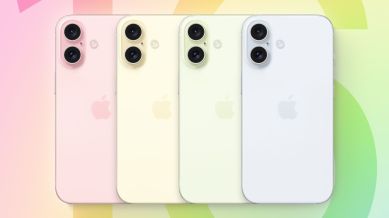From iPhone 11 to iPhone 16: Tracing the evolution of the ‘vanilla’ iPhone
Since its inception, Apple has fine-tuned the based models of its iPhone each year. Consistent innovations have made these baseline iPhones one of the most sought-after smartphones.

Cupertino-based tech giant gives special attention to making them stand out each year. A fresh design element or feature, each year, attracts new legions of iPhone buyers and also encourages existing customers to upgrade their phones.
Unlike some of the Android smartphone brands, Apple does not make substantial changes. Instead, with every iteration, Apple makes minor yet meaningful changes to ensure there is a sense of resemblance between two different generations of iPhones. At the same Apple infuses certain new elements to boost its sales.
With only just a few days left for the launch of the iPhone 16 series, here is a look at the evolution of all base iPhone models since the iPhone 11 launched in 2019.
iPhone 11: Dual-camera system, 4K video recording, and more
The iPhone 11 (review) was a very special model from Apple, which was also the first non-Plus iPhone model to feature a dual-camera system – a 12 MP wide-angle and a 12 MP ultra-wide angle lens. Despite all the upgrades, it was launched for Rs 64,900 and was slightly cheaper than the launch price of the iPhone XR. The iPhone 11 also popularised features like 4K video recording, and other minor improvements like enhanced connectivity, speakers, and scratch-resistant glass.
iPhone 12: The groundbreaking baseline iPhone
The iPhone 12 (review) was a substantial upgrade over the iPhone 11 both in terms of design and specifications. It was also the first and most affordable 5G iPhone. With its flat frame design, it offered better ingress protection with an IP68 rating, and also brought the goodness of OLED to the baseline iPhone, offering excellent brightness, colour reproduction, and contrast. It also introduced MagSafe wireless charging, and for those who love smaller smartphones, Apple also introduced the 5.42-inch iPhone 12 mini.
iPhone 13: The iterative upgrade
The iPhone 13 (review) when compared to the iPhone 12 looked a bit unique with its diagonally placed dual-camera system, a smaller notch with a higher screen-to-body ratio. Powered by the A15 chip, it was almost as powerful as the Apple iPhone 13 Pro. This version also eliminated the 64 GB variant and started with 128 GB. While this wasn’t really much of an upgrade over the iPhone 12, it was definitely much better than the iPhone 11 or the iPhone XR in every possible way. Again, the iPhone 13 mini is still regarded as one of the best small-sized smartphones that didn’t compromise on anything, even on battery life, especially when compared to its predecessor.
iPhone 14: A more repairable iPhone, in a bigger size
The iPhone 14 (review) looked almost identical to the iPhone 13, in fact, it was even powered by the same A15 chip that powered the iPhone 13, but offered 6 GB of RAM, enhancing the multitasking experience. With this series, Apple also introduced the bigger iPhone 14 Plus, featuring a large 6.7-inch screen, both models also offered an improved design that is easy to repair. Overall, the iPhone 14 lineup was user-friendly and delivered improved battery life.
iPhone 15: A modern take with several fine-tuning
With the iPhone 15 (review), Apple delivered all the upgrades that one expected from a modern iPhone, and it was as big as the pro iPhones. This includes the introduction of a USB-C port, for the first time on an iPhone, Dynamic Island, which was earlier limited to the iPhone 14 Pro, a 48 MP high-resolution camera, and an improved design with slightly rounded-off corners. The iPhone 15 also came in two sizes, however, as it was based on the A16 chip from the iPhone 14 Pro, it missed out on Apple Intelligence.
iPhone 16: Apple Intelligence across the board
With the iPhone 16, Apple is reportedly introducing Apple Intelligence or its AI features to the baseline iPhone. The iPhone 16 will also have new hardware features such as the action button, which was first introduced on the iPhone 15 Pro, and a new capture button, which will be available on all four variants of the iPhone 16 series.
With these upgrades, it’s very evident that Apple is on the right track to deliver a baseline iPhone that’s superior and offers everything that one comes to expect from a new iPhone, and the upcoming iPhone 16 will likely be the most capable baseline smartphone from Apple, period.